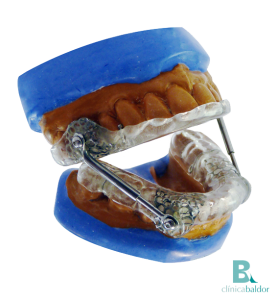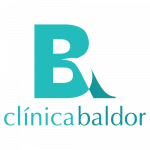Dental treatments Costa Rica
PERIODONTAL TREATMENT
TIME REQUIRED FOR PERIODONTAL OR GUM TREATMENT:
Full mouth Scaling or deep cleaning can be done in 2 days as follow:
- Complete Periodontal or gum exam and full set of x Rays.
- 2 Quadrants of scaling
- 2 Quadrants of scaling
Important Remark:
- Periodontal or gum surgery can be done in less than 2 weeks.
- Patients who have limited time in Costa Rica and need 4 quadrants of periodontal surgery can have 2 quadrants of gum surgery on 2 consecutive days and have the sutures remove the following week from 7 to 12 days depending on the gum surgery.
SELF EVALUATION FOR PERIODONTAL DISEASE (GUM INFECTION):
- Are your gums red or swollen?
- Do you ever have pain in your mouth?
- Do your gums bleed during brushing?
- Do you have persistent bad breath or bad taste in your mouth?
- Have your gums pulled away from your teeth?
- Have you noticed pus between your teeth and gums?
- Are your teeth loose and separating?
- Do you show too much gum when you smile?
- Have you notice any change in your bite?
- Do you ever develop sores in your mouth?
PERIODONTAL DISEASE AND TREATMENT:
Periodontal or gum disease is a bacterial infection. Dental plaque (bacteria) and calculus (tartar) can penetrate between your gum and the root of your teeth creating bone loss. The amount of treatment required will depend on the severity of the disease. In the early stages, gum disease is generally treated with non-surgical procedures called scaling and root planning. If the disease is more advanced periodontal surgery may be required. Periodontal plastic surgery can also improve the appearance of your smile. Your sustained oral health is based on regular dental examinations and cleanings.
We offer periodontal surgical procedures to help you keep your natural teeth and have a healthy smile:
- Periodontal plastic surgery (gingival grafts and others)
- Osseous surgery
- Crown lengthening procedures
- Regeneration techniques such as bone grafts, guided tissue regeneration, etc.

PERIODONTAL MAINTENANCE (DENTAL CLEANINGS):
Periodontal Maintenance is define as the combination of procedures performed in order to maintain oral health of the patient, as well as early detection and treatment of periodontal disease, either new or recurrent.
This Procedure Includes:
- Extraoral, dental and periodontal examination (gums and bone), to rule out or confirm the existence of new disease.
- Probing (gum depth measure) to compare with the initial probing at the previous visit, in order to assess whether the treatment is effective or not.
- Full mouth scaling (cleaning) to remove plaque and calculus (tartar) from above and below the gumline.
- Teeth polishing with prophy paste.
- Recommendations about your hygiene techniques.
Objectives of Periodontal Maintenance
- Maintain dental and periodontal health of the patient long-term.
- Detect and prevent recurrence and / or progression of periodontal disease in patients previously treated for gingivitis, periodontitis, periimplantitis or previously healthy patients.
- Prevent or reduce the incidence of tooth loss by controlling the health of the dentition, bone and gums.
- Maintain patient’s health function and aesthetic at their best level.
- Remove the bacteria attached to the patient’s teeth to reduce and prevent infection.
- Improve patient’s breath.
How Often Should I Have Periodontal Maintenance?
- EVERY 6 MONTHS: professional dental cleanings are recommended every 6 months in patients who are not susceptible to gum disease.
- EVERY 3 MONTHS: patients who already had moderate to severe gum disease, gum surgery or built plaque and calculus very fast are recommended to have a periodontal maintenance every 3 months.
Factors to Consider
- Rate of accumulation of plaque and tartar.
- Amount of bleeding or swelling.
- Ability of the patient to brush and floss well.
- Health risk factor (pregnancy, diabetes, heart disease) or genetic predisposition.
- Medications that patients take.
Keeping the gums and the bone surrounding your teeth as healthy as possible is an important part of your regular visits to the periodontist.
OROFACIAL PAIN
IDENTIFY YOUR PROBLEM:
The following questionnaire may help you know if your pain and discomfort could be due to your masticatory muscles and the jaw joint (TMJ):
- Do you have pain in your jaw when you chew or open wide?
- Does your jaw feel tired after chewing or a dental visit?
- Do you suffer from headaches on the side of your head?
- Do you have difficulty in opening your mouth wide?
- Does your jaw make noises like clicking or grinding when you chew or open wide?
- Do you suffer from ear pain or dental pain that does not respond to normal medical or dental treatment?
We offer a comprehensive program to control chronic orofacial, head, and neck pain. The most common symptoms that patients have are: headaches, yaw pain, jaw clicking and popping, painful opening and chewing, neck pain, ear aches, and toothaches.
Ear aches and tooth aches that don’t respond to normal treatments may be due to referred pain from the muscles of mastication. Also the jaw joint (TMJ) is right in front of the ear canal, so pain in this joint may be felt as ear pain.
A treatment program is tailored to each patient’s needs which will include from 3 to 6 visits, and can be programmed in 1 to 2 weeks. After this, the patient will learn a maintenance program which will be followed at home, to continue managing the problem. In many occasions, a mandibular intra oral appliance will be made to help control habits and bruxism. The rate of success after 1 year is very high if the patient continues to follow a simple maintenance program at home.
NO MEDICATIONS
In most cases the treatment will not involve medications.
RESTORATIVE DENTISTRY
One of the most important objectives in our clinic is to give the patient the highest possible balance between esthetics, restorative dentistry, occlusion, and oral health.
Some dental treatments are guided almost only by esthetics, leaving the health of the periodontal tissues, the oral mucosa, and the masticatory system in a second level. Also there has to be good balance with masticatory function which must include efficacy in mastication with healthy masticatory muscles and temporomandibular joints.
At Clínica Baldor we use the best dental restorative materials and dental technicians. The restorative treatment goes hand in hand with the periodontal and functional needs of the patient. We offer all the new techniques and procedures with the latest materials. Porcelain crowns, fixed bridges, bonded composite fillings, removable partial dentures, tooth whitening.


In a few hours we can change your old amalgam fillings to white composite fillings.
We use Zimmer implants which is a USA company. The oral surgeon and Dr. Baldioceda will assess the patient and use X-rays to decide a treatment plan. Generally after placing an implant you have to wait 6 months to do the restorative work. An implant can be placed the day of a tooth extraction. However, this is not possible in all cases. Sometimes a bone graft has to be placed before placing the implant.
Orthopedic Mandibular Advancement Device (OMAD)
Treatment for SNORING, BRUXISM and OBSTRUCTIVE SLEEP APNEA (OSA)
At Baldor Clinic we have design a special oral device to help treat snoring, bruxism and reduce obstructive sleep apnea (OSA): the Orthopedic Mandibular Advancement Device (OMAD).
WHAT ‘OMAD’ IS
MAD is a front-line custom-made oral device that pushes the jaw forward while you sleep. This helps to reduce snoring and to control obstructive sleep apnea (OSA).
WHAT ‘OMAD’ DOES
- Controls bruxism
- Protects teeth from fractures/cracks due to pressure
- Relaxes the jaw muscles
- Reduces snoring
- Reduces sleep apnea – opening the space between the tongue and the palate to allow air passage/flow
HOW ‘OMAD’ WORKS
This device places the jaw in a more advanced position than usual to prevent the tongue from blocking the throat while sleeping, allowing the air to move freely when breathing. At the same time, it allows you to open and close your mouth, drink water, and even talk – although not perfectly.
DURABILITY OF ‘OMAD’
This oral device could last many years with a proper care. If you drop it and it fractures, it can be repaired. If it requires to push/move the jaw forward or backward, it can be adjusted.
